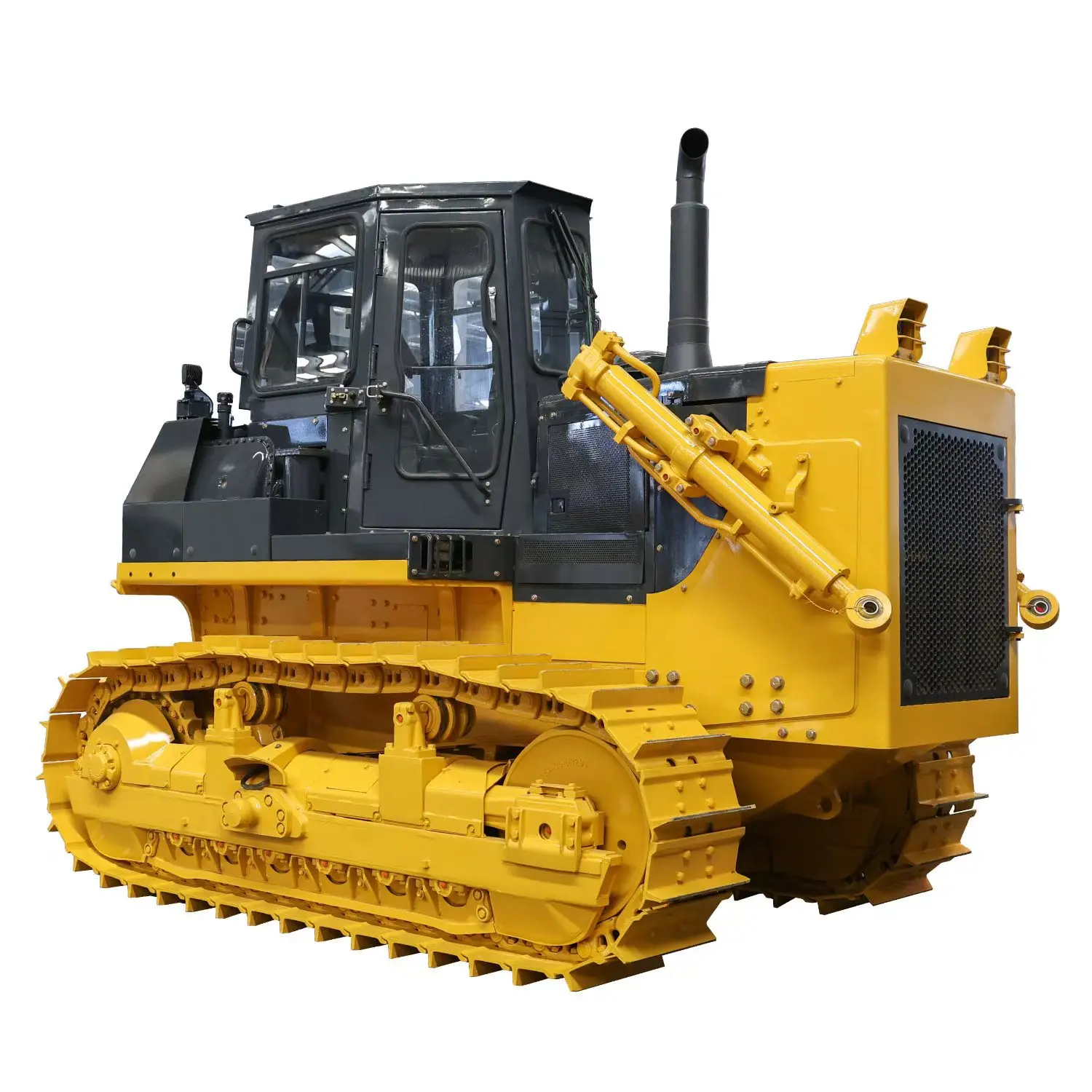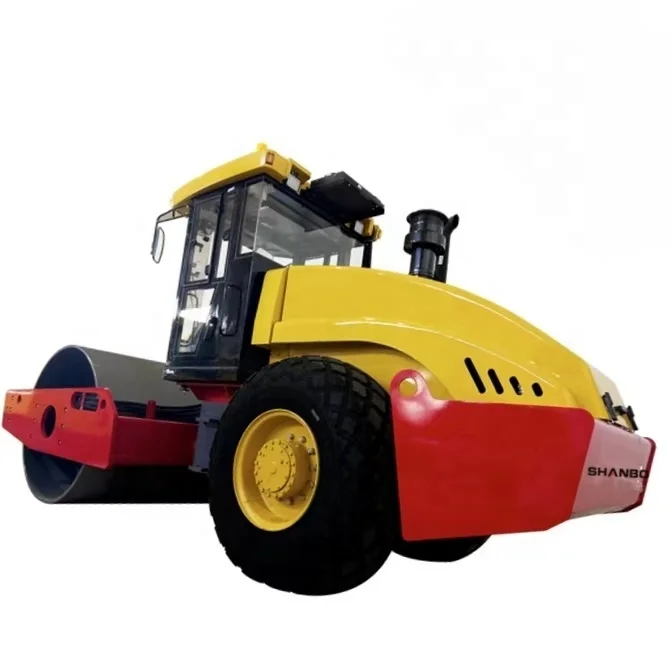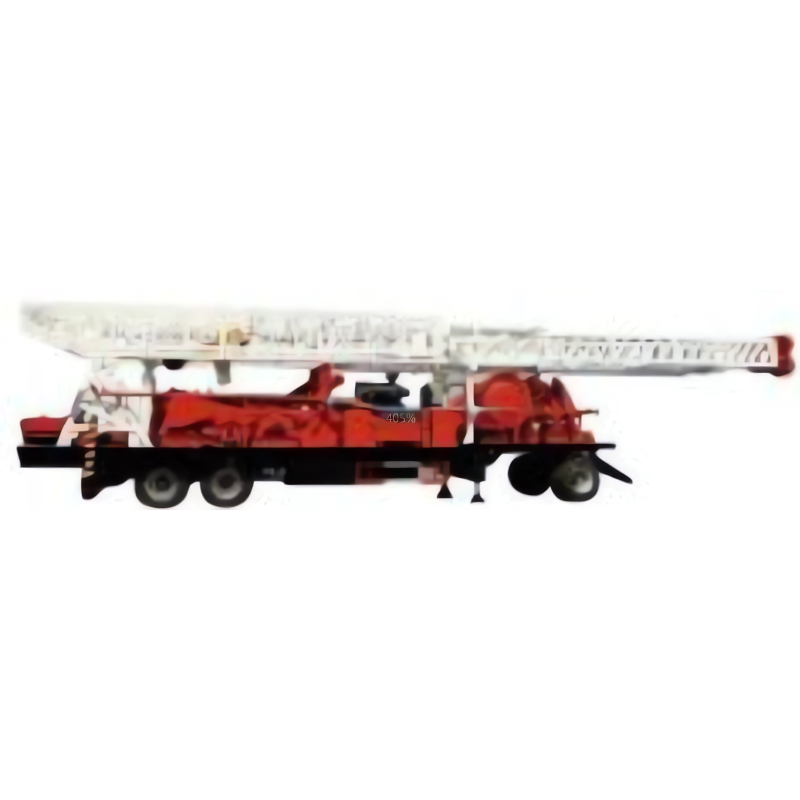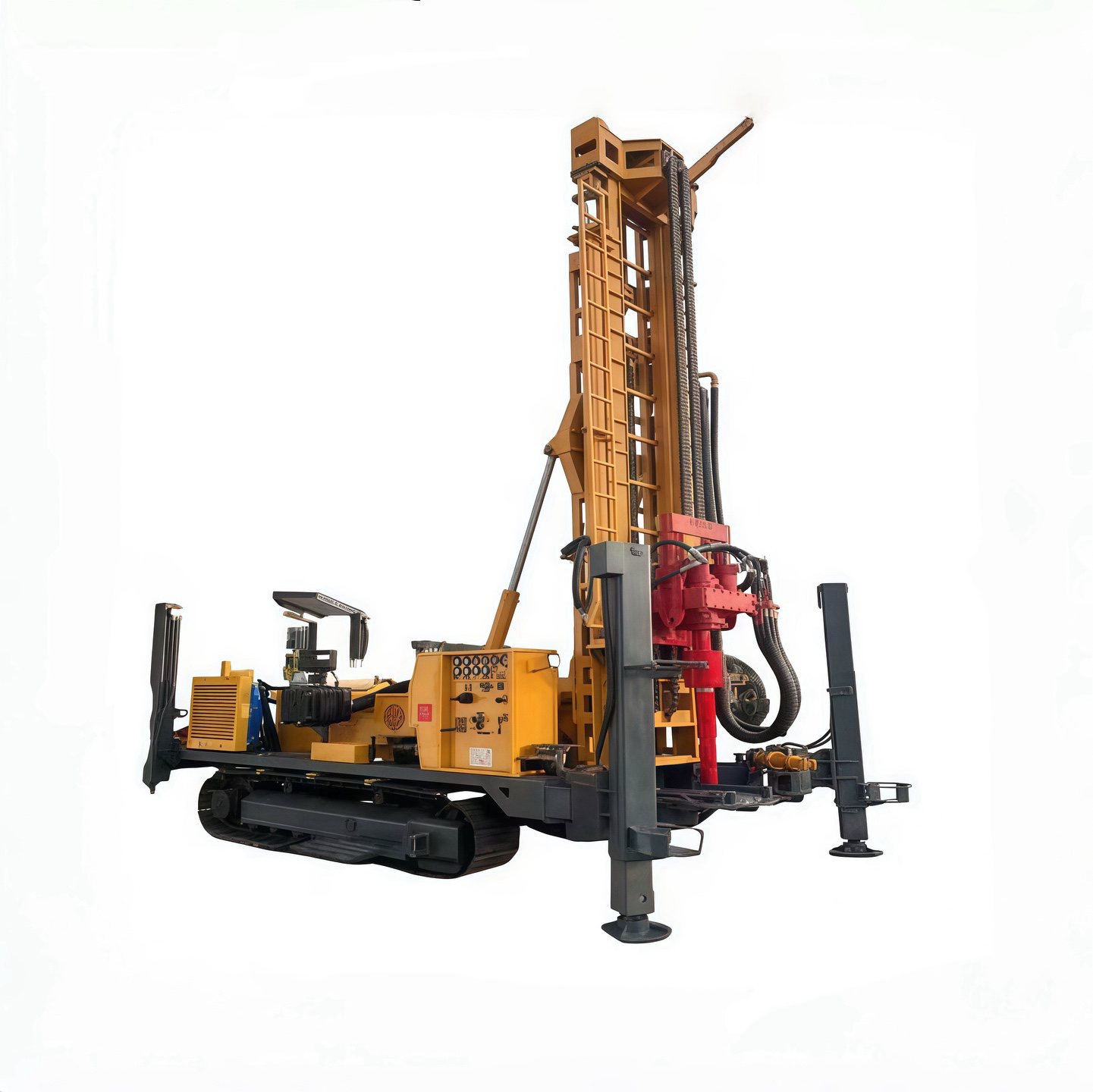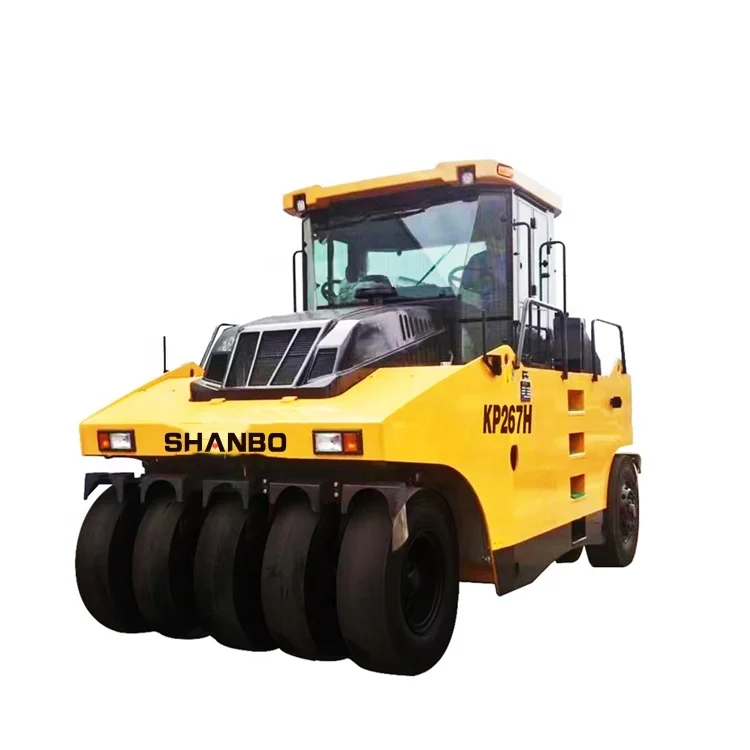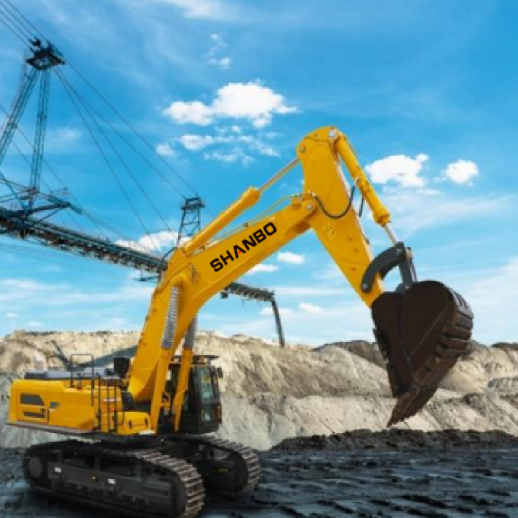The Ultimate Construction Equipment Guide: Everything You Need to Know
Essential Types of Construction Equipment and Their Applications
Excavators: Versatile Earthmoving Powerhouses
Excavators are essential machines in construction, revered for their ability to perform an array of earthmoving tasks efficiently. Primarily used in projects that require significant digging and trenching, excavators are versatile machines, adapting seamlessly to material handling and demolition tasks.
This adaptability is attributed to the wide array of attachments available, including buckets for digging, hammers for breaking, and pincers for gripping. Each attachment serves a specific function, expanding the capabilities of excavators across various construction needs.
The efficiency of excavators is undeniable; they significantly reduce both the time and labor required for tasks traditionally carried out manually. According to industry data, the use of excavators can cut down project time by almost 30%, making them indispensable on tight schedules.
Modern excavators, with their advanced hydraulics and ergonomic designs, are tailored for specific job requirements, enabling them to adapt to different site conditions while maintaining operational efficiency.
Bulldozers: Heavy-Duty Site Preparation Experts
When getting ready for construction sites, bulldozers play a really important role because they have so much power to clear out land and reshape the ground. These big machines move through dirt and debris pretty well, pushing stuff around with those huge front blades. There are different kinds of bulldozers out there, mostly sorted by how big they are and what kind of blade they have attached. Most commonly seen are straight blades, universal ones, and angle blades. Each type works best for certain jobs, some good for everyday digging while others handle tougher soil moving tasks on larger projects.
The heavy duty tracks give these machines an edge when navigating rocky ground or bumpy terrain where standard wheels would struggle. While the upfront cost might seem high, most companies find that bulldozers pay for themselves over time because they can handle tough jobs day after day without breaking down. These beasts really shine during big earthmoving operations and land grading tasks. That's why mines, logging camps, and highway contractors all keep several of them on site. The machines just get the job done right from the start, which saves money in the long haul since there's less need for rework or repairs later on.
Loaders: Material Handling Workhorses
Loaders are renowned for their role in lifting and transporting materials. Their primary purpose is to scoop, transport, and load heavy materials like sand, gravel, and debris, making them essential in construction.
There are several types of loaders, including wheel loaders and skid-steer loaders, each engineered for specific environments. Wheel loaders are excellent for bulk handling and often used in large-scale operations, while skid-steer loaders thrive in tight spaces due to their compact design and enhanced maneuverability.
Loaders come with all sorts of attachments these days. Forks help lift and move pallets around while buckets handle things like gravel or dirt. This makes them pretty versatile machines for different jobs. They cut down on manual work quite a bit which means companies save money on labor costs over time. Real world testing shows how these machines speed things up across construction sites and warehouses alike. Most contractors will tell anyone who asks that having good loader equipment is just about essential nowadays if they want to keep projects running smoothly without breaking the bank.
Road Rollers: Precision Compaction Solutions
In road construction, road rollers play a key role in getting that right compaction level needed for durable roads. The machines basically press down on surfaces to create a strong base, squeezing out those pesky air pockets and bringing everything together tightly. There are generally two kinds worth mentioning here. Static rollers handle the top layers and final touches, while their cousins, the vibratory rollers, pack a real punch with all that extra energy they put into the mix. These heavy hitters are usually reserved for deeper layers where maximum density matters most.
The pavement industry has set clear guidelines about how tightly soil and aggregate need to be packed under roads to make them last longer. Road rollers built today not only hit these targets but often go beyond them. New tech such as automatic compaction systems makes all the difference. These systems actually monitor the pressure being applied in real time and adjust accordingly so contractors know exactly when they've got it right. Getting this part right matters a lot for anyone working on paving projects. When done properly, roads require fewer repairs down the road and simply hold up better against traffic and weather wear over time.
Motor Graders: Surface Refinement Specialists
Motor graders are really important when it comes to getting surfaces just right after initial work. They make sure everything ends up flat and even, which matters a lot during road building projects. Most models come with this big front blade that does three main things cutting through material, moving it around, and flattening out whatever needs fixing. This kind of precision work helps shape those curved sections of roads and the edges along highways. Because they can get such accurate results, these machines show up all over different types of construction sites from highways to airport runways where exact measurements count.
Motor graders get used all over the place really. Think about road construction jobs, getting sites ready for buildings, heck even clearing snow from big parking lots. The industry folks will tell anyone who'll listen that adding tech stuff like GPS guidance and those fancy laser systems makes a world of difference when it comes to accuracy and how fast things get done. These upgrades let the operators keep those slopes just right throughout the whole job. And let's face it, nobody wants their roadways looking like they were built by someone sleepwalking. Better gradients mean better results and faster completion times across the board.
Well Drilling Rigs: Subsurface Exploration Technology
Drilling rigs for wells come in all sorts of shapes and sizes, basically designed to bore into the ground for various reasons including pulling out valuable resources or getting information about what's underground through geological studies. There's quite a range when it comes to these machines. Some folks use auger boring systems while others go with rotary or even percussion drills depending on what kind of rock they're dealing with and exactly what needs to get done on site. These rigs really matter because they help extract things we need from below the surface but also monitor our environment at the same time. They play big roles across multiple sectors like the oil and gas industry where they tap into fossil fuels, plus in creating water wells that communities rely on for fresh drinking water.
New drilling tech has made well drilling faster and safer than ever before. Things like computer controlled drills and real time data analysis systems have really boosted both precision and worker safety on site. Looking ahead, the drilling sector seems set for expansion as companies need more energy sources while also trying to keep tabs on underground environmental effects. Many firms are now investing heavily in monitoring systems that track groundwater changes and soil stability during operations, which helps them meet stricter regulations without slowing down production too much.
Selecting the Right Machinery for Project Requirements
Analyzing Project Scope and Material Types
Understanding the scope and material types of a project is critical to selecting the right machinery. A thorough project analysis helps ensure that the equipment chosen aligns perfectly with project requirements, preventing delays and inefficiencies. Various material types—such as sand, clay, and rock—impact the selection process significantly.
For example, using equipment designed for soft earth on rocky terrain can hinder progress. Misaligned equipment can lead to extended project timelines and increased costs. To effectively analyze project requirements, follow these steps:
- Assess Project Size and Complexity: Determine the scale and intricacy of the project to match the machinery's capabilities.
- Identify Material Types: Analyze soil and material properties to select equipment suitable for the terrain.
- Consult Expert Advice: Seek insights from experienced professionals to understand how machinery can adapt to varying project conditions.
In essence, comprehensive project analysis ensures that the selected machinery can perform effectively across different scenarios and materials.
Evaluating Terrain Challenges and Equipment Capabilities
Equipping a project with the right machinery begins with understanding terrain challenges. Uneven, rocky, or muddy terrains dictate specific equipment needs, necessitating robust machinery capable of handling such conditions. Equipment capabilities play a crucial role, enabling construction teams to overcome these terrains.
Take drilling rigs for example. They work great in solid ground but tend to have problems when dealing with sand unless they're properly adjusted first. We've seen plenty of situations where crews didn't check the ground type thoroughly enough, which ended up costing them weeks of time and thousands extra dollars. When contractors actually take the time to understand what their equipment can handle, things go much better. Some folks swear by certain testing methods while others rely on old fashioned experience. Either way, getting this right makes all the difference between a smooth operation and one filled with headaches down the road.
Understanding Bulldozer Price Points and ROI
What a bulldozer costs depends on lots of things really. Brand matters a lot obviously, plus the model number and all those fancy features some have. For construction companies, these machines represent quite an expense when they're making big purchases. But here's the thing about bulldozers they pay off pretty well over time because they just move dirt so fast compared to other methods. Look at any job site where bulldozers are working hard, and it becomes clear why contractors love them. The numbers back this up too. Contractors report saving thousands on labor expenses alone when using bulldozers instead of manual crews. Plus sites get ready for building much quicker than if workers had to do everything by hand or with smaller equipment.
Financing options for bulldozers—ranging from outright purchase to leasing—provide flexibility based on budget constraints. Market trends, including advancements in bulldozer technology, can also affect costs. Case studies demonstrate cost-saving benefits achieved through thoughtful bulldozer investments and highlight the true value they provide in construction.
Comparing Wheel Loader vs Wheeled Excavator Applications
Construction sites rely on both wheel loaders and wheeled excavators, though they handle very different jobs. Most folks know wheel loaders for what they do best: hauling big loads of dirt, gravel, or sand around the site. These machines can move tons of material quickly between stockpiles and trucks. Meanwhile, wheeled excavators bring something else to the table. They dig trenches, foundations, and pits with precision while still being able to move around the site on wheels. The real difference comes down to what the job requires. A loader won't dig as deep as an excavator, but it'll beat any excavator at loading materials into trucks. Before picking one over the other, there are several factors worth thinking about when looking at these two workhorses side by side.
-
Wheel Loaders:
- Advantages: High load capacity and quick material transport.
- Disadvantages: Limited digging capability.
-
Wheeled Excavators:
- Advantages: Versatile in digging and precise material handling.
- Disadvantages: Smaller load capacity compared to loaders.
Expert recommendations help determine which equipment best suits project needs. Productivity metrics support decision-making by showcasing efficiency levels unique to each type of machinery, ensuring the best fit for construction demands.
Operational Safety and Equipment Best Practices
Critical Safety Protocols for Heavy Machinery Operation
Operating heavy machinery requires following basic safety rules to keep workers safe and maintain a secure work area. Regulations like those from OSHA set these safety standards, which really matter when it comes to avoiding accidents on site. Looking at data from the Bureau of Labor Statistics shows something pretty clear: when companies ignore proper machinery operation procedures, we see a lot more serious injuries happening in workplaces across different industries.
So what should be on every operator's to do list? First things first, check all equipment before getting started. Read through those operation manuals carefully instead of just skimming them. And don't forget to make sure safety features such as seat belts and alarm systems are working properly. Training isn't just optional either it makes a real difference. Good training gives workers hands on experience with the machines they operate daily. When people know exactly how something works, they're less likely to make mistakes that lead to accidents. Companies that invest time in proper training tend to see fewer incidents on site over time.
PPE Requirements Across Equipment Categories
Personal Protective Equipment (PPE) is critical in safeguarding construction workers from numerous job site hazards. Different machinery operations require specific PPE, such as hard hats, glasses, gloves, and steel-toed boots. According to the National Safety Council, proper use of PPE can prevent nearly 50% of workplace injuries.
Different types of personal protective equipment come with their own maintenance needs if they're going to work properly. Workers should check gear regularly for signs of damage or deterioration, and stick to what the manufacturers say about cleaning procedures. Safety professionals stress the importance of matching PPE to actual working conditions and hazards present on site. Getting the right protection makes all the difference when operating heavy machinery such as bulldozers or asphalt rollers. The wrong gear can leave workers vulnerable even in seemingly routine situations around construction zones.
Emergency Shutdown Procedures and Hazard Zones
Knowing how to shut down equipment in an emergency situation isn't just important for operating heavy construction machinery it's absolutely critical. These shutdown protocols stop major breakdowns from happening and keep workers safe on site. Every construction location comes with its own set of danger spots. Think about deep excavations where walls might collapse, or places near massive machines that are constantly moving back and forth. Proper marking of these risky areas is essential but often gets overlooked during busy workdays. Most construction companies now require their staff to complete specific safety courses that teach them not only how to spot potential dangers but also what steps to take when something goes wrong. Some training programs even include hands-on drills at actual worksites to make sure everyone knows exactly what to do under pressure.
A systematic approach to establishing emergency protocols includes conducting risk analyses, developing detailed response plans, and implementing them with precision. Regular drills and refresher courses ensure all personnel are prepared to act swiftly in emergencies, thus enhancing overall site safety and efficiency.
Implementing Effective Dust Control Measures
Dust is a real problem on construction sites these days. Not only does it mess with workers' health, but it also causes all sorts of environmental headaches. That's why good dust control makes so much sense. There are plenty of ways to tackle this issue. Water spraying works pretty well, along with those chemical stuff they put down and sometimes even building temporary enclosures around work areas. Speaking of water spraying, some folks at the American Conference of Governmental Industrial Hygienists did some research showing that just misting things down can cut airborne dust particles by something like 80 percent or so. Pretty impressive when you think about it.
Compliance with regulatory requirements like the Clean Air Act ensures construction activities do not compromise air quality. Best practices for dust control involve continuous monitoring of dust levels and deploying remedial applications swiftly, ensuring a safer, compliant work environment.
Maintenance Strategies for Maximizing Equipment Lifespan
Preventative Maintenance Checklists for Key Machinery
Getting into the habit of regular maintenance work really pays off when it comes to making construction gear last longer. Most operators know that sticking to a proper schedule catches small problems before they turn into big breakdowns on site. Take common machines like excavators, those heavy duty road rollers we see everywhere, or even front end loaders. A good maintenance plan should cover checking all the moving parts, making sure everything stays properly lubricated, and swapping out anything that shows signs of wear before it fails completely. This kind of proactive approach saves money in the long run and keeps projects running smoothly without unexpected delays from equipment troubles.
This approach not only reduces repair costs but also minimizes unexpected downtime. According to industry reports, companies leveraging preventative maintenance can lower repair expenses by up to 30%. Experts recommend that these maintenance tasks be carried out on a weekly or monthly basis, depending on the machine's usage intensity.
Hydraulic System Care and Lubrication Schedules
Hydraulic systems run most construction equipment, allowing everything from basic lifting operations to complex attachment movements on excavators and bulldozers. Keeping these systems working right means checking for leaks regularly, something that gets missed all too often. A small leak today turns into major problems tomorrow, reducing overall machine performance and increasing maintenance costs down the road. Training crews to spot early warning signs makes all the difference. They need to know what normal pressure readings look like versus when things start fluctuating unpredictably. Strange knocking sounds coming from the pump area? That's not just background noise during operation it signals trouble ahead if ignored long enough.
Maintenance studies highlight that improper lubrication is a chief cause of equipment wear; hence, adhering to a strategic lubrication schedule is vital. Scheduled lubrication systems, which automatically dispense the right amount of lubricant at predetermined intervals, can be an excellent investment for ensuring consistent upkeep and prolonging machinery life.
Common Bulldozer Repairs and Warning Signs
Regular maintenance and timely repairs of bulldozers are essential to maintaining project timelines and budgets. Common repairs include servicing of the track system, blade adjustments, and engine tuning. Recognizing early warning signs like abnormal vibrations, strange noises, or warning lights can help prevent major breakdowns.
A manufacturing firm actually cut their project delays by around 15% after following these maintenance tips when equipment broke down. The numbers back this up too many companies end up spending way more on repairs and face serious production hiccups when they ignore early warning signs. Most industry pros recommend getting operators trained for basic daily inspections so they can spot problems before they escalate. And it makes sense to have clear procedures in place for reporting issues quickly through the proper channels. This kind of proactive approach keeps everything running smoother in the long run without those costly emergency fixes.
Proper Storage Techniques During Off-Seasons
Storing construction gear properly when seasons change matters a lot for keeping machines running well, but many folks forget about it until problems start showing up. When equipment sits outside without protection, things break down faster than they should. Think about those big bulldozers and wheeled excavators we bring out only certain times of year. They get beat up by rain, snow, and sun if left exposed. Good storage means getting everything clean first, then giving all the moving parts some fresh lube so they don't seize up. Covering machines with heavy duty tarps helps keep moisture away, and finding a spot indoors where nothing gets stolen or damaged makes sense too. What happens when people skip these steps? Rust forms on metal parts, batteries die completely, hydraulic systems fail... all sorts of expensive headaches that cut short how long equipment stays useful on job sites.
Experts emphasize the importance of climate-controlled storage facilities to prevent such deterioration. Additionally, maintaining a checklist for decommissioning and recommissioning gear for storage can help in sustaining machinery health over long idle periods.
Technological Innovations in Modern Construction Equipment
Telematics Integration for Fleet Management
The construction industry has seen major changes in how it manages fleets thanks to telematics technology. With GPS tracking, diagnostic tools, and various communication features built into these systems, site managers now have much better visibility over where their equipment is at any given moment. They can check how machines are performing and figure out ways to get more work done without wasting resources. The whole connected approach means companies tend to use their assets more effectively while keeping machines running longer between repairs. Take maintenance scheduling for example many modern telematics setups will actually send alerts when parts start showing wear signs, so crews can fix issues before something breaks down completely during critical projects. This kind of proactive management saves money in the long run and keeps operations moving smoothly on tight deadlines.
A lot of real world examples back up how useful telematics can be in practice. Construction companies across the country are seeing their bottom lines improve after implementing these systems. Some report cutting costs by around 25% just from better managing their vehicle fleets. What's really interesting is how these technologies help predict when equipment might need servicing before breakdowns happen. This means machines last longer and shops spend less time fixing things that weren't broken yet. Looking ahead, the field seems poised for some exciting developments. More and more manufacturers are working on integrating artificial intelligence with existing telematics platforms. Early adopters suggest this combination could revolutionize how contractors make decisions about where to allocate resources on job sites.
Electric-Powered Machinery and Emission Reductions
We're seeing a big move towards electric machinery across construction sites these days, something that really points to how sustainability is becoming more important for the industry. Take excavators and loaders running on electricity instead of diesel fuel they just don't pump out nearly as much carbon into the atmosphere. The difference in emissions between old school diesel machines and their electric counterparts can be pretty dramatic. For contractors, this isn't just good for the planet either. Many cities and states are cracking down on emissions standards, so going green with electric equipment makes both environmental sense and business sense at the same time.
Looking at real world examples shows how companies around the globe are switching over to electric machinery with good results. These machines tend to work better while saving money in the long run. Many national governments have started offering tax breaks and other financial perks to get construction firms to replace their diesel equipment with electric alternatives, which has definitely helped speed things along. Most people working in the field expect this shift toward electrification to keep growing stronger as battery tech improves and regulations become stricter on emissions. While nobody can say exactly when we'll reach full adoption, it's pretty clear that construction sites will look much cleaner and quieter in coming years thanks to all these changes happening now.
GPS-Guided Grading Systems and Precision Excavation
The introduction of GPS guided grading systems is changing how precise excavation work gets done at construction sites. These systems basically use satellite tech to help machine operators know exactly where they are while working, so they can grade surfaces much more accurately than before. When jobs get done right the first time around, there's obviously less waste of materials like soil and gravel. Contractors also finish projects faster since they don't have to go back and fix mistakes. The bottom line? Big money saved on both material costs and labor expenses over the course of a project.
GPS technology works by combining various sensors with specialized software to build detailed maps of the ground surface, allowing machines to stick closely to exact grading specifications. Real world data shows construction sites using GPS guidance can save around 40% in time and materials compared to traditional methods. The savings come from better material usage and fewer mistakes during earthwork operations. With more contractors adopting this tech across North America, many field engineers now consider GPS guidance essential rather than optional. The improved precision means less rework and wasted resources, which explains why so many companies are making the switch despite higher upfront costs for the equipment.
Autonomous Features in Road Roller Operations
What we're seeing now with road rollers equipped for autonomy is changing how construction sites actually work, making things safer while getting more done faster. These machines come packed with sensors and smart software that let them handle most jobs without needing constant human oversight. That cuts down on accidents for workers and keeps projects moving along their schedule instead of getting stuck waiting for someone to operate equipment manually. The tech behind this includes things like GPS systems working together across multiple machines, sensors that spot obstacles before they become problems, and the ability to run themselves through complicated compaction patterns. Contractors report better results when roads get compacted just right from start to finish without those inconsistencies that happen when different operators do things slightly differently each time.
Looking at real world examples where companies have rolled out autonomous road rollers shows明显 improvements in site safety and fewer mistakes made during operation. The construction sector is definitely moving towards automation these days, and many firms are already testing self-driving equipment on their projects. What's next according to those in the know? Most think manufacturers will work hard to make these machines work better under different conditions and last longer between breakdowns. While there's definitely potential for smarter construction sites, nobody expects full automation anytime soon. For now, it's about finding the right balance between human oversight and machine efficiency.
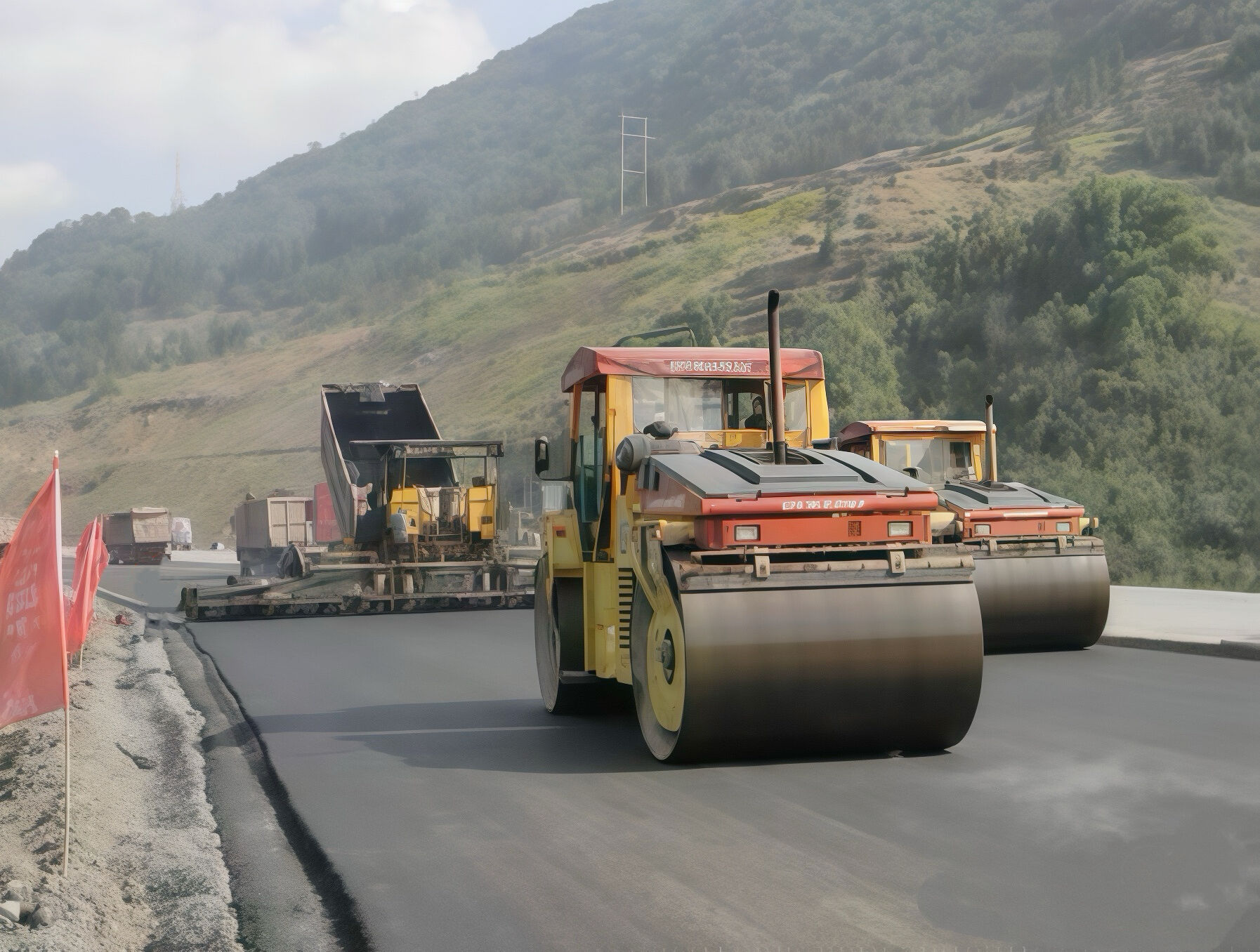
Market Trends and Cost Analysis for Key Equipment
Current Bulldozer Price Ranges by Class
Understanding the pricing structure of bulldozers is crucial, as they are categorized by class based on their power and functionality. Typically, bulldozers are divided into small, medium, and large classes, each with a distinct price range reflecting its capacity and features.
For example, small bulldozers used for residential projects might start from $30,000, whereas large industrial-class bulldozers can exceed $1 million. Factors impacting these prices include the brand, technology, attachments, and even market demand. Recent market trends suggest a steady appreciation in prices due to enhanced technology integration and material cost changes.
Wheel Loader Market Demand and Availability
Wheel loader demand goes up and down depending on what's happening in the market, mainly driven by construction activity worldwide and how economies are performing. Supply chain issues have really messed things up lately, making it hard to get these machines when needed. Prices have gone through the roof in some areas because of this. Take a look at recent numbers though they tell an interesting story. Sales of wheel loaders have been climbing steadily for about two years now. Big construction booms across Asian cities and major roadwork projects throughout North America seem to be behind this trend. Some manufacturers report waiting lists stretching months ahead as contractors scramble to equip their crews properly.
The situation varies quite a bit across different areas too. Demand remains strong in many developing countries where infrastructure projects are booming, but things have settled down somewhat in wealthier regions where markets are more mature. Most people working in the field suggest monitoring key construction equipment providers closely these days. Building good relationships with reliable suppliers can make all the difference when trying to maintain consistent operations. Looking ahead, the market seems pretty stable overall, though occasional supply issues do pop up from time to time, especially during unexpected events or seasonal fluctuations.
Depreciation Rates for Used Construction Machinery
Understanding depreciation rates helps figure out what used construction machinery is actually worth, which matters a lot to anyone buying or selling these machines. Most construction equipment tends to lose about 5 to 10 percent of its value every year. But there are several things that can speed up this decline. Machines that get worked hard day after day in tough environments just don't hold their value as well compared to ones that have been properly maintained over time. The condition they're kept in really makes a difference when it comes to resale value down the road.
Economic insights show that while used machinery can significantly reduce capital expenditure, choosing equipment with favorable depreciation is vital. Experts point to a stable trend where well-preserved machinery with comprehensive documentation sees better resale values, giving buyers a reliable guide on practical investments without sacrificing quality.
Global Factors Impacting Excavator Pricing
The cost of excavators gets influenced by all sorts of全球经济 stuff out there, including what raw materials cost and changes in regulations. Take steel prices for example they fluctuate quite a bit and this directly affects how much it costs to make these machines, which then gets passed along to customers buying them. We've seen this happen before too. When countries started slapping higher tariffs on each other's goods, manufacturers had no choice but to raise their prices accordingly across the board for construction equipment like excavators.
Moreover, ecological regulations pushing for lower emissions have propelled manufacturers towards more expensive technologies. Experts suggest that companies can better navigate these challenges by engaging in comprehensive market analysis and negotiating contracts that allow flexibility amidst price fluctuations.
Fuel Efficiency Upgrades for Existing Fleets
When it comes to cutting down on expenses, fuel efficiency stands out as something construction firms really need to pay attention to. Companies that upgrade their older machinery with newer tech tend to see big drops in both fuel burn and pollution output. A whole range of improvements exists these days. Some folks retrofit old engines, others work on making machines more aerodynamic, while many install systems that cut down on unnecessary idling time. Take hybrid technology for instance. Adding hybrids to heavy equipment like excavators and front-end loaders makes them run better and waste less gas overall. Many contractors report noticeable savings after making these kinds of changes.
The numbers tell us something interesting: businesses often save around 30 percent on fuel costs after making certain improvements to their vehicles. Industry insiders usually advise taking a close look at what kind of fuel economy matters most for each company before jumping into any major changes. Most find it works best when they roll out these improvements step by step instead of all at once. Breaking things down into immediate fixes, mid-range projects, and longer term strategies helps fleets get better mileage over time without breaking the bank. This approach makes sure money spent today actually supports what the business needs tomorrow.
Noise Reduction Technologies in Urban Environments
Reducing noise during city construction work helps build better relationships with neighbors and keeps everyone from getting too annoyed. There are plenty of ways to cut down on all that racket from big machines these days. Contractors can install special barriers around sites or use newer equipment with built-in sound dampening features for things like excavators and bulldozers. Beyond just following the law, these measures make a real difference in daily life for people living nearby who don't want their peace constantly interrupted by construction sounds every morning and evening.
For instance, projects in dense cities have successfully used equipment modifications to drastically reduce noise levels. Regulations mandating noise reduction encourage companies to adopt such initiatives, ensuring smoother operational processes. Case studies demonstrate how proactive noise management can lead to successful urban project completions with minimal community objection.
Recycling Programs for Retired Machinery Components
Recycling programs play an essential role in promoting sustainability within the construction industry. By repurposing retired machinery components, companies can substantially reduce waste and environmental impact. Various methods exist for recycling, such as dismantling components for reuse in new machines or utilizing parts in different construction applications.
Statistics indicate substantial environmental benefits, revealing a 40% reduction in landfill contributions due to effective recycling programs. Industry standards and best practices dictate the processes for managing these programs efficiently. Successful initiatives within large construction firms reveal the feasibility and impact of recycling on both sustainability and business outcomes.
Conclusion
Throughout this article, we've explored various aspects of construction equipment. Making informed decisions regarding equipment selection and management is crucial for enhancing operational efficiency and safety. Factors influencing equipment efficiency and safety, such as technological innovation, regulatory standards, and sustainable practices, play a significant role in optimizing construction operations.
Shanbo has built quite a reputation in the construction equipment world thanks to their focus on quality stuff and innovative designs. They've got almost everything builders need on site these days - think excavators, bulldozers, those big road rollers, loaders, and even motor graders. Their products cover all bases when it comes to getting construction jobs done right. What makes Shanbo stand apart is how they integrate cutting edge tech into their machines. From GPS guidance systems to fuel efficiency improvements, their gear keeps pace with what contractors actually want from their equipment in today's fast moving construction landscape.
Recommended Products
 Hot News
Hot News
-
“Water Savior” 200 m Reverse Circulation Water Well Drills Arrive in Uzbekistan
2025-03-28
-
Bulldozer Transport Guide: Best Practices, Safety Tips, and Cost Factors
2025-12-15
-
A Complete Guide to Construction Equipment Shipping: Methods, Costs, and Tips
2025-12-12
-
How Bulldozer Work Gets Done: Key Tasks, Techniques, and Applications
2025-12-11
-
Exploring the Capabilities of the Biggest Excavator in the World
2025-12-10
-
Essential Bulldozer Equipment: Components, Attachments, and Uses
2025-12-09
